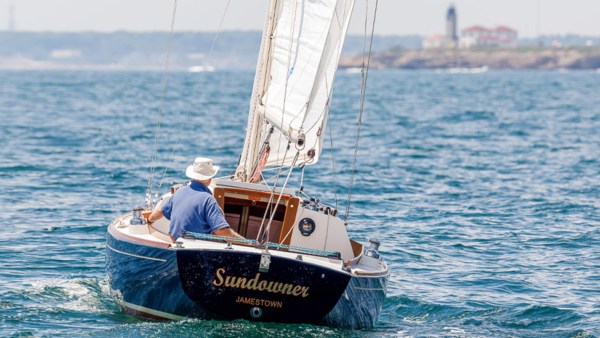 Continuing the Voyaging with Velella series by ASA writer-at-large Meghan Harvey. Meghan and her husband Prescott have been cruising aboard their boat Velella for the past 8 months, first in Mexico and now in the Pacific Northwest.
Continuing the Voyaging with Velella series by ASA writer-at-large Meghan Harvey. Meghan and her husband Prescott have been cruising aboard their boat Velella for the past 8 months, first in Mexico and now in the Pacific Northwest.
Almost two years ago, we left Seattle tentatively on a boat we barely knew. We had spent weeks and months preparing for our big voyage–-going over everything with a fine toothed comb, packing and repacking, whittling away at our big Excel sheet of to-dos. For 8 weeks, I studied navigation and trained to get my Captain’s license. We serviced all the fire extinguishers and the life raft, we installed lazy jacks and solar panels, hired a weather route to help us interpret our best window, and had all sorts of support as we left town on a foggy morning in August, having no idea (but some very vivid dreams) about what we were getting ourselves into.
Last week, we arrived again at departure day, from the same marina in Seattle, on the same boat. This time, we simply bought a copy of this year’s current and tide tables, picked up a few bags of fresh food, and slipped our lines. No losing sleep several nights in advance, no libations and pleas to Neptune, and no wondering what was around the corner.
What was around the corner was the Strait of Juan de Fuca, and I knew it well. The first time we’d fought our way out to the Pacific Ocean had almost convinced me that I’d made a grave mistake in choosing to buy a boat and live on it. As we pulled anchor on a lovely morning in Port Townsend this time, my stomach tightened in anticipation of what I knew to be a very challenging 90-mile entry-way to the Pacific Ocean. I was mentally prepared for disorganized wave chop, relentless seasickness, pathetic speed against the strong currents, and longer night watches because this time we didn’t have a third crew member with us to share the load. I was nervous about the exhaustion that I knew the Strait would induce, but I was expecting it this time around. Sailors ruefully call it the Strait of Juan de Puke-ah.

The current was with us as we nosed into the East entrance to the Strait this time, and the early morning wind was light and variable. We motored on glass-flat water at 7.5 knots, and I couldn’t believe our luck. I actually didn’t trust it at all, because I knew that when afternoon rolled around and the sea breeze started funneling towards us over the opposing ebb current, we’d be sailing in a washing machine. So, while the morning weather was still mild, we knocked off about 30 miles and pulled into Port Angeles at noon. No sooner had we tied up than the wind started whipping through the marina, and I enjoyed a thick cup of coffee with relish and self-congratulations at making the right call to pull in early.
The next morning, we did it again–-arose with the ebb that would carry us West, hoping to make as much way as possible before the westerly wind set in against us. This time, though, the wind rose earlier than we’d hoped, and dark clouds congregated in our path. Par for the course, I thought. I could see sheets of rain ahead, and I knew that our ebb tide was about to turn to flood in a couple of hours, making everything more of a slog. The clouds were moving fast, and I had heard radio reports that foretold a cold front. Cold fronts are more furious than warm ones, but they’re also quicker passing. As I zipped my foulies to the chin, stuffed handwarmers into my gloves, and put on a yellow sou’wester hat, I decided that I would like to handle this weather snarl like the salt I am now, rather than the trembling newbie I was two years ago.

On the leading edge of the front, the winds picked up suddenly, and rain fell in pinprick waves across our uncovered cockpit. Visibility dropped rapidly and the tanker that had been abeam of us only 2 miles off disappeared in the mist. Prescott flipped on the radar and I braced myself against the cockpit sole as we pressed on through it. Something about the look of the clouds and behavior of the winds around them told me this wasn’t going to last long. Sure enough, after the first onslaught, the dark clouds rose slightly and became a little lighter. The wind eased ever so little, and the rain stopped. We emerged about 2 hours later into sun-pierced afternoon mist, and I could see the line of clouds storming east into the Puget Sound. Ahead, out over the Pacific Ocean, the sky winked with patches of baby blue sky.

We reached Neah Bay, the farthest West you can go before turning South, and dropped our anchor in a bay drenched in sunset. We still had the Washington coast to transit before reaching Oregon, but Juan de Fuca was behind us, and we’d walked through the squalls gracefully. We enjoyed a dignified bottle of wine on the hook, as all good sailors should be able to do after a passage, and fell asleep soundly, trusting our anchor completely, and trusting our ability to handle the next leg of our journey. My dreams that night were laced with visions of rounding Cape Flattery proudly for a second time, savoring our last offshore night watch, and crossing the notorious Columbia River Bar–the final high hurdle in our seamanship exam.











